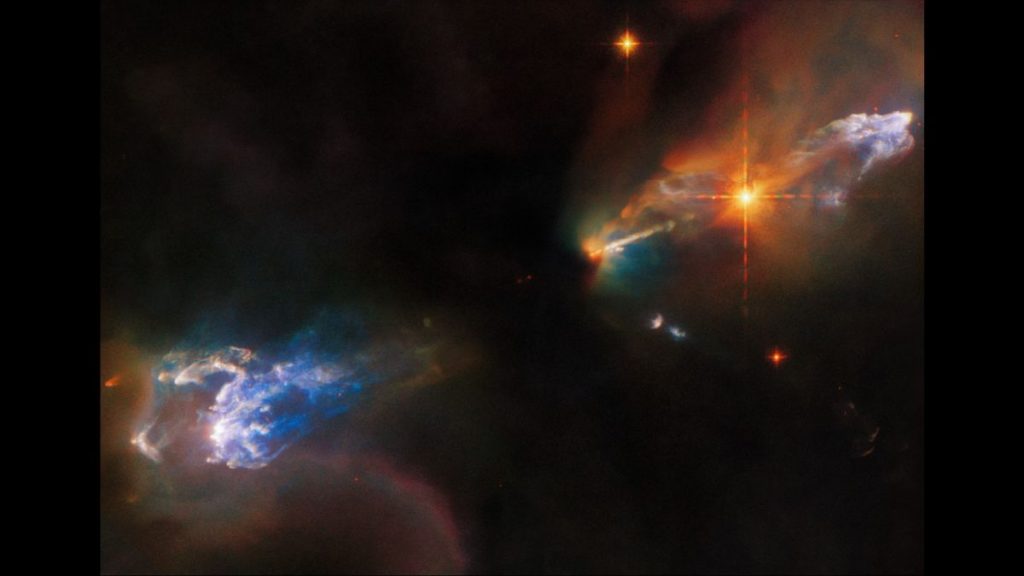Two puffs of star-making material exude mystical glows in a recently-published Hubble Space Telescope image.
A young star system produced them, although its fledglings can’t be seen here. They are shrouded in a thick layer of dust at the center of this image, which the Hubble Space Telescope team shared on Oct. 21 (opens in new tab). But from behind the scenes, the system casts out jets of gas at high speeds, which then smacks into surrounding gas and dust to form the two cloudy blasts seen here on the left and right.
These structures are called Herbig-Haro objects. In 2002, astronomers found the one on the right of the image (called HH 1) has parts moving at more than 248 miles (400 kilometers) per second, expelled by the jet visible just to the right of the dark central smudge. “The lives of newborn stars are tempestuous,” write European Space Agency (ESA) press officers in the image description. ESA manages the Hubble Space Telescope alongside NASA.
Related: Hubble telescope peeks through ‘cosmic keyhole’ in stunning photo
HH 1 and its counterpart on the bottom left, HH 2, are located in the constellation Orion about 1,250 light-years from Earth. HH 1 is decorated with a double star, too, though this object is unrelated to the jet.
Astronomers study Herbig-Haro objects like these to understand their physical processes. Thankfully, Hubble’s Wide Field Camera 3 gathered light from this region across 11 different wavelengths, each one providing unique information about what is happening around this stellar nursery.
ESA writes that some astronomers investigated the outflows so future research can optimize the capabilities of Hubble’s successor, the James Webb Space Telescope (JWST). The new observatory can peer into the universe with next-generation sensitivity. Its recent photos of the iconic “Pillars of Creation” wowed scientists and enthusiasts alike, and it will likely showcase these Harbig-Haro objects in fascinating new imagery when it finally points in their direction.
Follow Doris Elin Urrutia on Twitter @salazar_elin (opens in new tab). Follow us on Twitter @Spacedotcom (opens in new tab) or on Facebook (opens in new tab).

